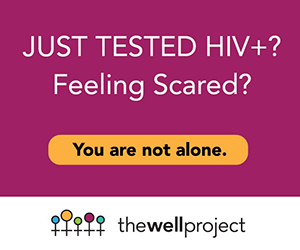
Lea esta hoja informativa en español
Table of Contents
- The Basics
- Chlamydia
- Genital Warts
- Gonorrhea
- Herpes
- HIV
- Syphilis
- Other Sexually Transmitted Infections to Know About
- Protecting Yourself and Others
- The Bottom Line
The Basics
Sexually transmitted infections (STIs) are infections that are passed from person to person through sexual contact. HIV is an STI. There are more than 25 STIs that are mainly spread by sexual contact through vaginal, anal, and oral sex. Globally, the World Health Organization (WHO) estimates that more than one million STIs are acquired every day.
Many STIs have no symptoms but can still be passed from person to person.
STIs are also sometimes called sexually transmitted diseases (STDs). While "STD" is often used interchangeably with "STI," they are not exactly the same. A "disease" is usually an obvious medical problem with clear signs and symptoms. "Infection" with an STI may or may not result in disease. This is why many individuals and organizations working in health are moving toward using the term "sexually transmitted infection" rather than "sexually transmitted disease." Most people with STIs do not have any symptoms and therefore often do not know that they can pass the infection on to their sexual partner(s).
If left untreated, STIs can cause serious health problems, including cervical cancer, liver disease, pelvic inflammatory disease (PID), infertility, and pregnancy problems. Having some STIs (such as chancroid, herpes, syphilis, and trichomoniasis) can increase your risk of acquiring HIV if you are HIV-negative and are exposed to HIV. People living with HIV may also be at greater risk of getting or passing on other STIs. When people living with HIV get STIs, they can experience more serious problems from them or find it more difficult to get rid of these infections.
The US has the highest rate of STIs in the resource-rich world. The US Centers for Disease Control and Prevention (CDC) reported that more than 2.4 million cases of chlamydia, gonorrhea, and syphilis (the three nationally reportable STIs) were diagnosed in 2023. Almost half of these occurred among young people (15-24 years old), even though that age group accounts for only a small proportion of all sexually active people.
There are several reasons why teenage girls and young women are vulnerable to acquiring STIs. First, the cervix (passage between the vagina and womb) in young people is lined with cells that are more likely to become infected with STIs. Second, teenagers and young adults may have problems getting the information and supplies they need to avoid STIs. They may also have trouble getting STI prevention services because they do not know where to find them, do not have transportation to get there, or cannot pay for them. Even if teenagers and young women can get STI prevention services, they may not feel comfortable in places designed for adults. They may also have concerns about confidentiality.
Teenage girls and women of color have some of the highest rates of STIs, especially for chlamydia and gonorrhea. High rates of STIs among women of color are the result of several factors, including higher rates of poverty, less access to healthcare, and an already high rate of STIs in communities of color. Because there are more people with STIs in some communities, this increases the risk that a woman gets an STI when she has sex, because potential sex partners within her community are more likely to have an STI.
Regardless of race or age, less than half of those who should be tested for STIs are actually tested. This is especially important for women, since women suffer more frequent and more serious complications from STIs than men.
Many STIs have no symptoms but can still be passed from person to person. A lot of people who have an STI do not even know it. They may be healthy, and still have an STI. It is not possible to tell a person has an STI just by looking at them. The only way to know for sure is to get tested - to have regular sexual health screenings by your healthcare provider. In the US, you can find an STI screening site in your area here.
While many people with STIs show no signs or symptoms of their infection, when there are signs of STIs, they are most likely in the genital area. The genital area in some people, including cisgender women, includes the vulva (the area around the vagina including the lips), vagina (the opening where menstrual blood comes out), buttocks, urethra (the opening above the vagina where urine comes out) and anus (the opening where a bowel movement - "poop" - comes out). The genital area in others, including cisgender men, includes the penis, scrotum ("balls"), urethra (the tube through which urine passes through the penis), and anus.
Fortunately, you can reduce your chances of getting many STIs by practicing safer sex. Most STIs, though not all, can be successfully cured through treatment. For other STIs, there are effective medications that can help you manage your condition.
Click above to view or download this fact sheet as a PDF slide presentation
Some of the most common STIs include those listed below. For pictures of different STIs, please click here (note: some of these images are graphic).
Chlamydia
- This is one of the most common STIs. It is caused by a bacterium that lives in the genital tract, including in vaginal secretions and semen ("cum"), but can also cause infections in the throat and rectum ("butt"). It can be spread by vaginal, oral, or anal sex without a condom or latex/polyurethane barrier. Pregnant people can pass it on to their babies during delivery.
- Chlamydia can be successfully treated with antibiotics
- Symptoms may include vaginal discharge and burning during urination, but most people do not have any symptoms.
- CDC recommends yearly chlamydia screenings for all sexually active women under the age of 25, as well as for older women with risk factors, such as new or multiple sex partners. Unfortunately, recent reports show that fewer than half of sexually active women under 25 are screened for chlamydia, in part because of a lack of awareness among healthcare providers.
- If you test positive and are treated, it is important that your partner receive treatment to prevent reinfection
View our full fact sheet on Chlamydia
Genital Warts
- Genital warts are caused by viruses. HPV (human papillomavirus) is the name of a large group of viruses. Certain types of HPV cause warts on the hands or feet. Other types cause infections in the genital area that can lead to genital warts, cervical cancer, or cancer of the vulva, vagina, anus, or penis.
- Genital HPV is spread easily through skin-to-skin contact during vaginal, oral, or anal sex. Condoms do not entirely prevent transmission. People living with HIV are more likely to be living with HPV than HIV-negative people. People living with HIV and HPV are also more likely to develop genital warts, as well as cervical or anal cancer.
- It is important to find HPV early and get treatment to prevent health problems. Regular cervical screening tests (pap smears) are a good way to check for HPV.
- There are also three effective HPV vaccines. It is important for young people to get vaccinated before they have sex (before they have been exposed to HPV), since people who already have HPV may not be protected by the vaccines. That said, people who have already had sex can still get vaccinated against HPV.
- For people living with HIV, US guidelines recommend the HPV vaccine up until age 45
View our full fact sheet on HPV
Gonorrhea
- Sometimes called "the clap," this STI is transmitted by a bacterium in vaginal secretions and semen ("cum"). It can be spread through vaginal, anal, or oral sex without a condom or latex/polyurethane barrier.
- Symptoms may include a yellowish or greenish vaginal discharge and a burning feeling when urinating ("peeing"). Gonorrhea can also affect the anus ("butt") and the throat. Many women have no symptoms. Symptoms in the butt include rectal pain, discharge and bleeding, caused by a condition called proctitis. In the throat, the bacterium can cause an itchy or persistent sore throat.
- Gonorrhea can be treated with antibiotics. If left untreated, it can cause PID and permanent infertility (difficulty getting pregnant). All sexually active women should be screened for gonorrhea. If you are not offered a gonorrhea test, you may want to request one from your healthcare provider.
- If you test positive and are treated, it is important that your partner receive treatment to prevent reinfection
View our fact sheet on Gonorrhea
Herpes
View this section as a separate fact sheet
- Women living with HIV may have more frequent herpes outbreaks that may be more difficult to treat
- Herpes is an STI caused by a virus that lives in the nerves
- People with herpes may have no symptoms. If they do have symptoms, these are usually itchy or painful blisters. The virus is spread through skin-to-skin contact with sores, but it may also spread from the normal unbroken skin of a person who has herpes. Many people who have never had symptoms may not realize that they have herpes.
- Currently there are no recommended tests to look for this infection other than a physical exam and culture of a blister. In most people, the sores come and go, but the virus stays in the body for life.
- There is no cure for herpes, but the antiviral drugs Zovirax (acyclovir), Valtrex (valacyclovir), and Famvir (famciclovir) can reduce the number of outbreaks if taken daily, and can shorten outbreaks and make them less severe if taken as soon as symptoms begin. Valtrex has also been shown to lower the risk of passing the infection to someone else.
- People who are pregnant can pass herpes to their babies, so it is important to let your healthcare provider know if you have genital herpes and you are pregnant or planning to become pregnant
View our full fact sheet on Herpes
HIV
HIV stands for Human Immunodeficiency Virus. HIV is the virus that causes AIDS. It is present in blood, vaginal secretions, semen, and breast milk. HIV can be spread through vaginal, oral, or anal sex when a condom, other latex/polyurethane barrier, or treatment-as-prevention method is not used.
Getting tested for HIV is part of routine, regular healthcare in many countries. The Public Health Agency of Canada, for example, recommends that HIV testing be discussed as part of routine medical care. The CDC now recommends testing all people ages 13 to 64 unless they have already been tested. It also recommends that you get tested for HIV before beginning a new sexual relationship, regardless of your age.
The World Health Organization (WHO) makes different suggestions based on where you live. Where HIV is widespread, it recommends that HIV testing be offered to anyone who goes to a healthcare facility. Where HIV is less common, it suggests that HIV tests be offered to people who may be at higher risk of having been exposed to HIV.
It is important that you also get tested if:
- You have ever had vaginal, anal, or oral sex without a condom
- You have ever shared needles or syringes to inject drugs or other substances
- You are uncertain of your partner's status, or your partner is living with HIV
- You are pregnant or are considering becoming pregnant
- You have ever been diagnosed with an STI or STD
- You have hepatitis C
- You begin treatment for tuberculosis (TB)
If left untreated, HIV can cause serious illness and death. If you test positive for HIV, there are effective medications that can help you stay well for a very long time.
When a person living with HIV is taking HIV drugs and their viral load stays at undetectable levels (not enough HIV in the blood for a standard test to measure), that person cannot transmit HIV to a sexual partner who is HIV-negative. Further, if you are not living with HIV, pre-exposure prophylaxis (PrEP) is a drug a healthcare provider can prescribe to prevent you from acquiring HIV – similar to the way daily birth control pills help people avoid becoming pregnant. PrEP is now also available as a shot you get every two months. These HIV treatment-as-prevention methods only prevent HIV – not any of the other STIs described in this fact sheet.
You cannot get the healthcare and treatment you need if you do not know your HIV status. For more information on HIV, go to the section on The Well Project website called HIV: The Basics.
Syphilis
- This STI is caused by a bacterium. It can be spread by vaginal, anal, or oral sex without a condom or latex/polyurethane barrier.
- The disease has several phases. While it can be asymptomatic (cause no symptoms), people who have symptoms and primary syphilis (early disease) may have pain-free open sores, called chancres, in the genital or anal area or around the mouth. The sores usually heal on their own within three to six weeks. People with secondary syphilis (a later stage of the disease) often have a rash and/or hair loss.
- If left untreated, syphilis can proceed to the latent stage during which it may have no visible symptoms but can cause damage to the heart, brain, eyes, ears, and other organs. After many years, it can progress to neurosyphilis (syphilis in the brain or spinal cord) and result in dementia or strokes.
- Syphilis can be successfully treated with antibiotics
- People who are pregnant can pass syphilis to their babies during pregnancy and childbirth, so it is important that pregnant people get tested for syphilis
- If you test positive and are treated, it is important that your partner receive treatment to prevent reinfection.
View our full fact sheet on Syphilis
Other Sexually Transmitted Infections to Know About
Chancroid
This STI is caused by a bacterium. Symptoms may include genital sores, vaginal discharge, a burning feeling when urinating, and swollen lymph nodes in the groin. It can be spread by vaginal or anal sex or skin-to-skin contact with sores. Chancroid can be treated with antibiotics.
Hepatitis
Hepatitis is an inflammation (irritation) of the liver. Some types of hepatitis are caused by viruses that exist in blood, vaginal secretions, semen, and breast milk. These include hepatitis B (HBV) and hepatitis C (HCV), both of which can be sexually transmitted. There is a vaccine to prevent HBV, but not HCV. Both can become chronic (long-term) and very serious. Because HBV and HCV often have no symptoms, most people do not know that they have the infection. If there are symptoms, they can include fatigue, nausea, vomiting, yellowing of the skin or eyes, dark urine or abdominal (belly) pain. It is important for people living with HIV to be tested for HBV and HCV and treated, if necessary. Hepatitis C can be cured. For more information, see our fact sheet on Treatment of Hepatitis C in People Living with HIV.
Pubic Lice ("Crabs")
Pubic lice live in the pubic hair (the hair around the genitals) and can be transmitted by skin-to-skin contact. They can also be spread through infected clothes and bedding. Symptoms may include intense itching and seeing lice or eggs in the hair. Pubic lice can be treated with over-the-counter medications. However, pregnant people must use products specially designed for them. Contaminated clothes, sheets, pillowcases, blankets, and towels should be washed in hot water and laundry soap to kill lice and eggs and to prevent being infected again.
Trichomoniasis
This STI is caused by a single-celled germ called a protozoa. It can be spread during vaginal, oral, or anal sex without a condom or latex/polyurethane barrier. Trichomoniasis is a common cause of vaginal infections. Symptoms may include a foamy, foul-smelling vaginal discharge and itching. Sometimes there are no symptoms at all. Trichomoniasis can be successfully treated with antibiotics. When a woman is infected with trichomoniasis, she and her sexual partner must both be treated, or the untreated partner can re-infect her.

Protecting Yourself and Others
You can greatly reduce your risk of getting sexually transmitted infections by practicing safer sex. Some STIs, such as genital warts, herpes, and syphilis, can be spread through contact with infected skin that is not covered by condoms or other barriers. Here are some tips for protecting yourself:
- Use a latex condom for vaginal and anal sex or a plastic condom if you are sensitive to latex
- The internal (female) condom can also prevent many sexually transmitted infections
- Use condoms without lubricant for oral sex on a man
- Use latex or plastic barriers, such as a dental dam or plastic wrap, for oral sex on a woman or for oral-anal sex; use latex or plastic gloves if you have cuts or sores on your hands
- Use water-based lubricants (KY, Astroglide) with latex condoms or barriers
- DO NOT use oil-based products (Vaseline, coconut or other vegetable oil, body lotions) because they destroy latex
- Do not use lubricants or condoms that contain nonoxynol-9 (N-9), which can damage the lining of the vagina or anus and increase the chances of acquiring HIV
- Wash shared sex toys (dildos, vibrators) or put on a fresh condom between users
- Know that some methods of birth control, such as birth control pills, shots, implants, or diaphragms, will not protect you from sexually transmitted infections. If you use one of these methods, also use a latex condom.
- Talk with your sex partner(s) about sexually transmitted infections and using condoms
- Talk honestly with your healthcare provider and your sex partner(s) about any sexually transmitted infections you or your partner has or has had
- Have regular pelvic exams and cervical cancer screenings, but remember that cervical cancer screening tests (pap smears) do not screen for sexually transmitted infections other than HPV
- Talk to your healthcare provider about having a routine sexually transmitted infection screening as part of your annual physical or gynecological exam
- Consider asking your provider about taking the drug doxycycline within 72 hours of a sexual encounter (post-exposure prophylaxis). "Doxy PEP" has been shown to reduce likelihood of acquiring some bacterial STIs (specifically chlamydia, syphilis, and in some studies, gonorrhea) for women of transgender experience and others.
- Do not share needles or syringes for injecting drugs or other substances; if you do share drug equipment, be sure to clean your works
The Bottom Line
There are many sexually transmitted infections, including HIV. Some can be cured with treatment. Some, like HIV, hepatitis B, and herpes, cannot be cured, but can be managed. Many can cause serious health and fertility problems, or even death, if left untreated. Practicing safer sex can protect you from many, but not all, STIs.
See your healthcare provider right away if:
- You have had sexual contact with someone who may have an STI
- You have symptoms like genital sores, discharge, or burning when you urinate
- You are pregnant
It is important for you to get tested regularly for STIs if:
- You are sexually active
- You have sex with more than one partner
- Your partner has sex with people other than you
Many STIs do not have symptoms. If needed, get the treatment your healthcare provider recommends. Even if the symptoms go away, you still need to finish treatment. If symptoms continue after treatment, see your healthcare provider. Also make sure your partner(s) get(s) treated, so that you do not pass an infection back and forth.



